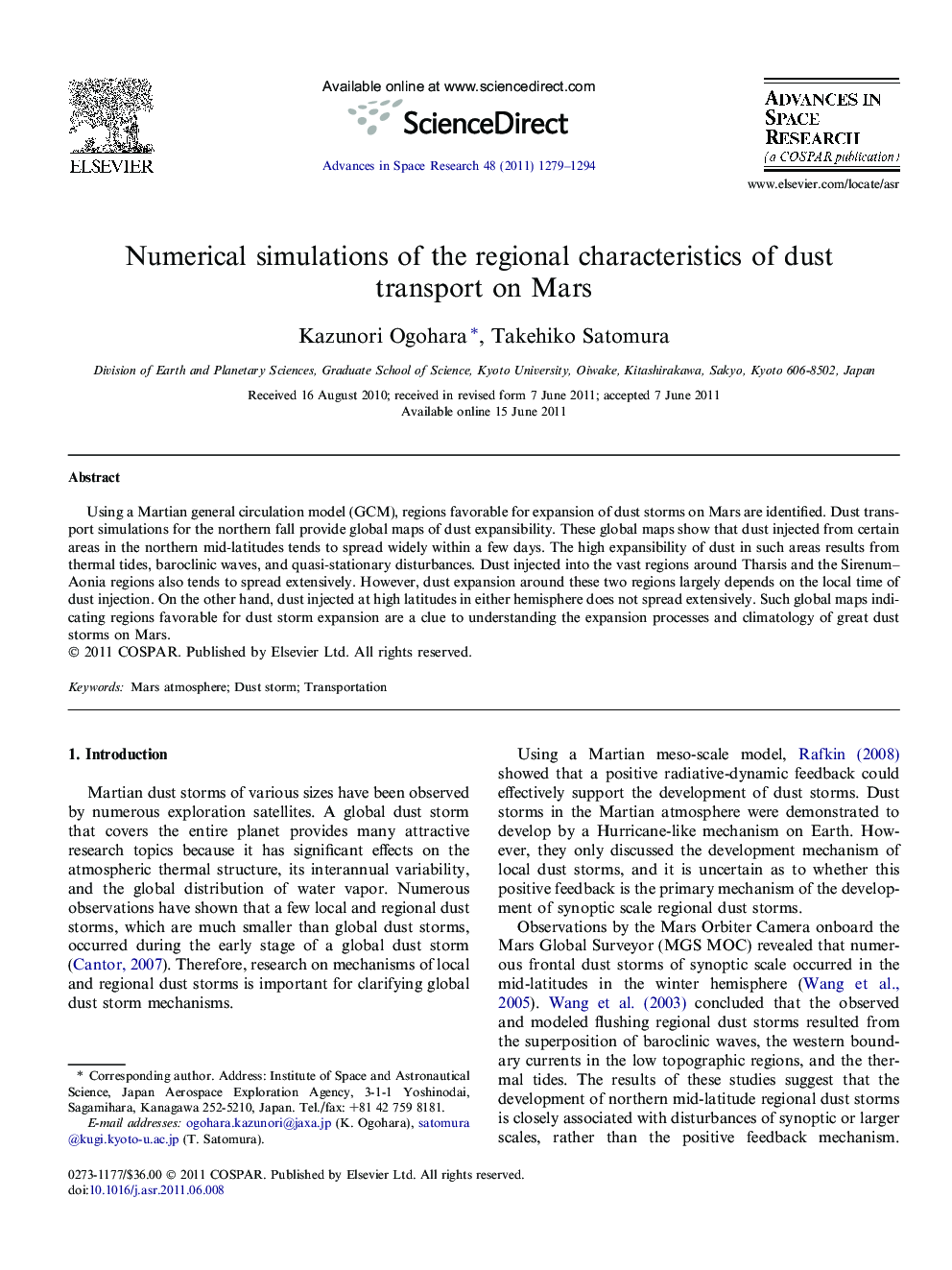| Article ID | Journal | Published Year | Pages | File Type |
|---|---|---|---|---|
| 1765037 | Advances in Space Research | 2011 | 16 Pages |
Abstract
Using a Martian general circulation model (GCM), regions favorable for expansion of dust storms on Mars are identified. Dust transport simulations for the northern fall provide global maps of dust expansibility. These global maps show that dust injected from certain areas in the northern mid-latitudes tends to spread widely within a few days. The high expansibility of dust in such areas results from thermal tides, baroclinic waves, and quasi-stationary disturbances. Dust injected into the vast regions around Tharsis and the Sirenum-Aonia regions also tends to spread extensively. However, dust expansion around these two regions largely depends on the local time of dust injection. On the other hand, dust injected at high latitudes in either hemisphere does not spread extensively. Such global maps indicating regions favorable for dust storm expansion are a clue to understanding the expansion processes and climatology of great dust storms on Mars.
Related Topics
Physical Sciences and Engineering
Earth and Planetary Sciences
Space and Planetary Science
Authors
Kazunori Ogohara, Takehiko Satomura,
